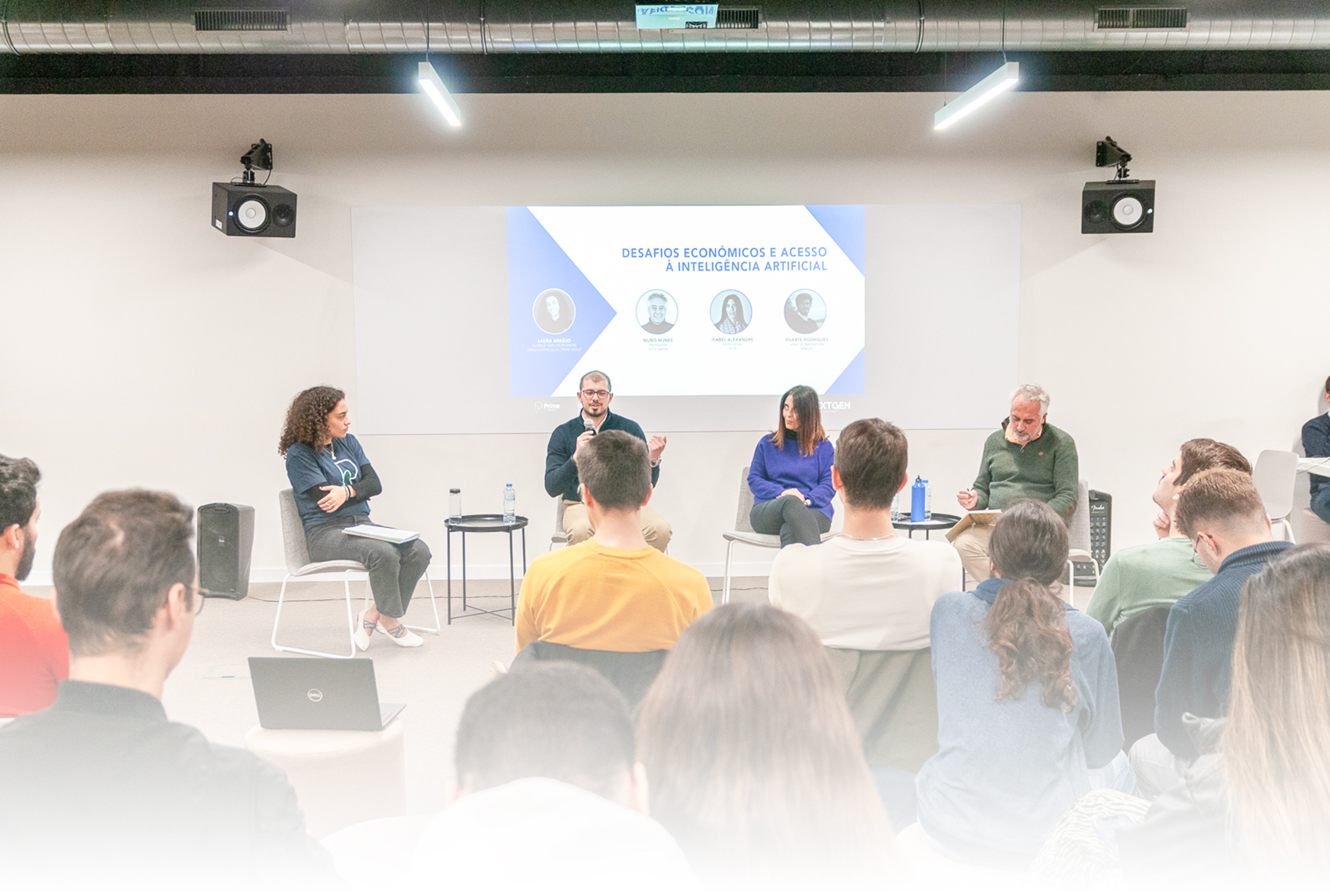Emerging Technology Trends in Managed IT Services
As technology continues to advance, managed IT services will evolve to harness new and updated emerging technology trends.
Technology
September 4, 2023
8 minutes read

“”
Managed IT services are a way for businesses to delegate their IT needs to a third-party provider. This frees up businesses to focus on their core operations, while the IT provider takes care of everything else.
Managed IT services are continuously evolving to keep up with technological advancements and changing business needs. Several trends are shaping the future of managed IT services.
These trends diverge in technique, as emerging technologies arise, but also in delivery models. Delivery models like Team Extension and Team as a Service are shaping the future of managed IT services.
Understanding Managed IT Services
Managed IT services are a way for businesses to outsource their IT needs to a third-party provider. This frees up businesses to focus on their core operations, while the IT solutions provider takes care of everything else.
Managed IT services can help businesses improve their IT security, efficiency, and uptime. IT solutions providers usually offer a wide range of services. Outsourcing IT services can bring attractive advantages, such as user support, scalability, flexibility, cost predictability, and can even help in business agility. Some IT services include:
Proactive Monitoring: Continuous monitoring of IT systems to detect and address issues before they escalate, minimizing downtime and disruptions.
Remote Support: Providing assistance and troubleshooting remotely to resolve IT problems quickly and efficiently.
Network Management: Managing and maintaining network infrastructure, including routers, switches, and firewalls, to ensure optimal performance and security.
Data Backup and Recovery: Implementing regular data backups and creating strategies for data recovery in case of data loss or disasters.
IT Strategy and Planning: Collaborating with the business to develop an IT strategy aligned with the company’s goals and growth plans.
Hardware Procurement: Assisting with the selection, purchase, and deployment of hardware and solutions.
Software Development: Designing, coding, testing, and deploying custom software applications tailored to meet specific business needs and objectives.
Low Code Development: Utilizing low-code platforms to rapidly develop applications with minimal manual coding, enabling faster deployment and reducing development time.
Cybersecurity Services: Implementing cybersecurity measures to safeguard digital assets and sensitive information from unauthorized access, cyber threats, and data breaches.
Managed IT services can be a valuable asset for businesses of all sizes. By outsourcing their IT needs to a third-party provider, businesses can free up their resources and focus on their core operations. Managed IT services can also help businesses improve their IT security, efficiency, and uptime.
When choosing a managed IT provider, businesses should carefully consider their needs and requirements. They should also make sure to choose a provider with a good reputation and experience in the industry.
Advantages of an IT Services Provider
An IT services provider is a company that offers a variety of technology solutions and support to other businesses. These providers specialize in managing different parts of technology systems to help clients meet their tech needs well. Managed IT services are really important in this area.
For businesses that don’t have enough knowledge, resources, or time to manage their technology well, IT services providers are really helpful. By getting help from these providers, businesses can concentrate on their main activities while experts handle their technology. This allows companies to be more efficient and to improve security.
Expertise: IT service providers bring specialized skills and knowledge to manage complex IT environments effectively.
Cost Savings: Outsourcing IT services can lead to cost savings compared to maintaining an in-house IT team and infrastructure.
Focus on Core Business: By delegating IT tasks, businesses can concentrate on their core activities and strategic initiatives.
Scalability: IT services can be scaled up or down based on business needs, ensuring optimal resource utilization.
24/7 Support: Many IT service providers offer round-the-clock support, minimizing downtime and ensuring continuous operations.
Remote and Hybrid Work: Managed IT services can help businesses to provide remote workers with the access they need to IT resources and applications.
Access to Latest Technology: IT service providers stay updated with the latest emerging technology trends, ensuring businesses have access to cutting-edge solutions.
Risk Mitigation: Providers implement robust security measures, reducing the risk of data breaches and cyberattacks.
In conclusion, IT services providers can be a valuable asset for businesses of all sizes. By outsourcing their IT needs to a third-party provider, businesses can free up their resources and focus on their core operations.
IT services providers can also help businesses improve their IT security, efficiency, and uptime. When choosing an IT services provider, businesses should carefully consider their needs and requirements. They should also make sure to choose a provider with a good reputation and experience in the industry.
Emerging Technology in Managed IT Services
Managed IT services are incorporating emerging technologies such as artificial intelligence (AI) and 5G integration to provide more efficient and advanced solutions. Companies are now looking at ways to drive innovation through emerging technologies, such as:
Artificial Intelligence (AI): Artificial Intelligence (AI) involves using advanced algorithms to enable computers to simulate human-like intelligence. AI-driven insights, predictive analytics, and automation enhance IT management by increasing efficiency and facilitating effective problem-solving.
5G Integration: 5G integration marks the deployment of fifth-generation wireless technology. This enhances connectivity speed and reliability, benefiting remote work and the Internet of Things (IoT), allowing for faster communication and more dependable connections.
Blockchain: Blockchain is a decentralized digital ledger technology that ensures secure data sharing and transparent transactions. It’s particularly valuable in sectors like finance and supply chain management, where it enhances accountability and trust.
Quantum Computing: Quantum computing is an emerging field that utilizes quantum bits (qubits) for processing data. While still in its infancy, quantum computing has the potential to revolutionize complex calculations and cryptography, with far-reaching implications for various industries.
Edge Computing: Edge computing involves processing data closer to its source rather than in centralized data centers. This reduces latency, a critical advantage for real-time applications that demand swift responses and improved user experiences.
Serverless Computing: Serverless computing abstracts server management, allowing developers to focus on writing code without managing the underlying infrastructure. This optimization enhances resource allocation and scalability, streamlining operations and resource usage.
Biometric Security: Biometric security enhances digital protection by implementing human physiological and behavioral characteristics for authentication. Methods like fingerprint and facial recognition fortify security and prevent unauthorized access.
Robotic Process Automation (RPA): Robotic Process Automation (RPA) involves using software robots to automate routine and repetitive tasks. This reduces errors, enhances efficiency, and increases productivity across various business processes.
Internet of Things (IoT): The IoT is the network of physical devices that are connected to the internet. These devices collect and exchange data, which can be used to improve efficiency, automate tasks, and make better decisions. Managed IT services can help businesses to manage their IoT devices and ensure that they are secure and compliant.
Low Code Development: Low code development is a streamlined approach to building software applications with minimal manual coding. It enables faster deployment, making it ideal for rapidly creating functional and efficient solutions.
As technology continues to advance, managed IT services will evolve to harness these emerging technology trends. As long as businesses still look for more effective and adaptable IT solutions. By staying ahead of the curve, managed IT service providers can help businesses to stay ahead of their competition and achieve their business goals.







